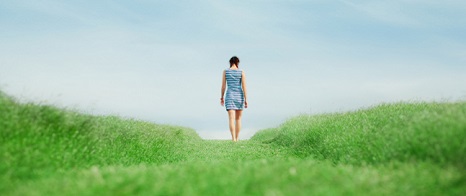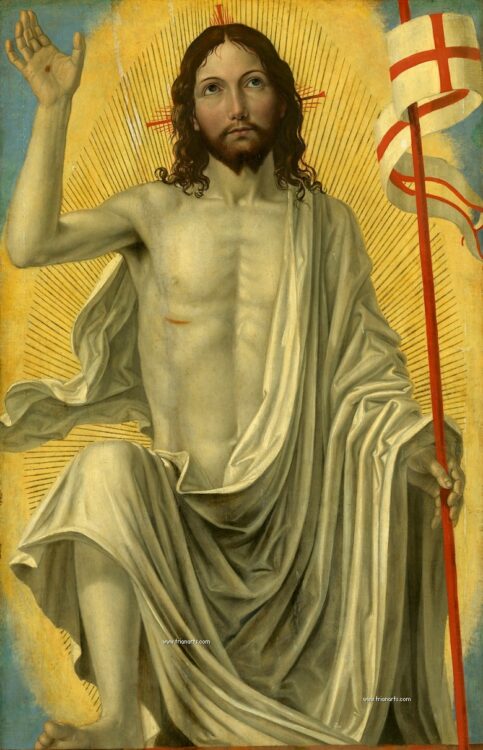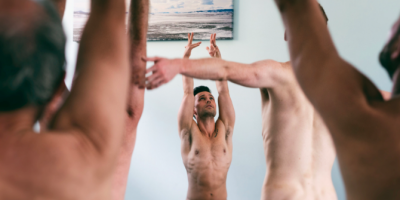This article focuses on the relationship between the Holy Spirit and the breath, and the how the act of breathing helps us understand the role and work of the Holy Spirit. These ideas came to me from the practice of yoga breathwork (pranayama).
Today when I post this article, Western Christians celebrated the Festival of Pentecost. “Pentecost” is Greek for “fifty days.” It is the “last and great day” of the Fifty Days of Easter. But it has it’s special commemoration: the pouring out of the promised Holy Spirit on the disciples of Jesus.
The symbols of the Holy Spirit in the story of Pentecost in Acts 2 are the wind, the tongues of fire, and the dove. A year ago I posted an article about the wind of Pentecost and Yoga in my series of articles on yoga cosmology. https://frank-answers.com/frank-answers-about-yoga-harnessing-the-wind-and-releasing-the-spirit/.
However, there is another story of Jesus giving the Holy Spirit directly to his apostles by breathing on them. On the same day as his resurrection Jesus appears to his apostles in the upper room. They are behind locked doors out of fear. Jesus says to them,
“Peace be with you. As the Father has sent me, so I send you.” When he had said this, he breathed on them and said to them, “Receive the Holy Spirit. If you forgive the sins of any, they are forgiven them; if you retain the sins of any, they are retained.” — John 20:22

Unlike Luke’s story of Pentecost in Acts 2, in which the Spirit swirled in “like the rush of a mighty wind” on about 150 of Jesus’ disciples, John’s story is a more personal energizing of the apostles with a direct commission for loosing and binding sins. This is the bestowal of authority within the community of Jesus’ disciples. As leaders of the church they need the Spirit of wisdom and understanding as they lead the Christian community in its life and mission.
My interest here is the connection between Spirit and breath. The lifegiving breath of God goes all the way back to the Lord God breathing life (ru’ach) into the man (Adam) he had shaped from the clay of the earth with the help of a spring of water that had welled up in the desert (Genesis 2:7). We humans cannot live without the oxygen that we breathe in from Earth’s air, or that is breathed into us (for example, in emergency resuscitation).

“Adam and the Breath of God” by Nadine Rippelmeyer
The very word spirit in Greek, Pneuma, means “breath.” We have a lot of words based on pneuma, such as pneumatic (operated by air) or pneumonia (lung infection). Spirit/breath is a source of energy, of power, of vitality. Christian life and mission depends on the operation of the Holy Spirit that proceeds from the God the Father and bestowed by God the Son.
The Holy Spirit is bestowed individually on every person who is baptized in the Name of the Father, and of the Son, and of the Holy Spirit. God is giving us divinity within our own bodies. Indeed, St. Paul says (twice) that “the body is the temple of the Holy Spirit” (1 Corinthians 3:16; 6:19). This is mind-boggling. The Holy Spirit can inhabit our very bodies. My theology professor, Carl E. Braaten, raised the question of whether we can speak of a “biology of the Spirit” (The Living Body, Harper and Row, 1976, 4–5). Theology and biology deal with the same body.
When I began studying yoga, I perceived that it was both a physical and the spiritual practice. Christianity is also a physical andf spiritual practice. These are not separate; Christianity as an incarnational religion promotes a somatic spirituality. We relate to God as bodily creatures. In Christ, God also has a body. Christ rose from the dead and ascended into heaven bodily. See my article https://frank-answers.com/frank-answers-about-the-body-gods-and-ours/.
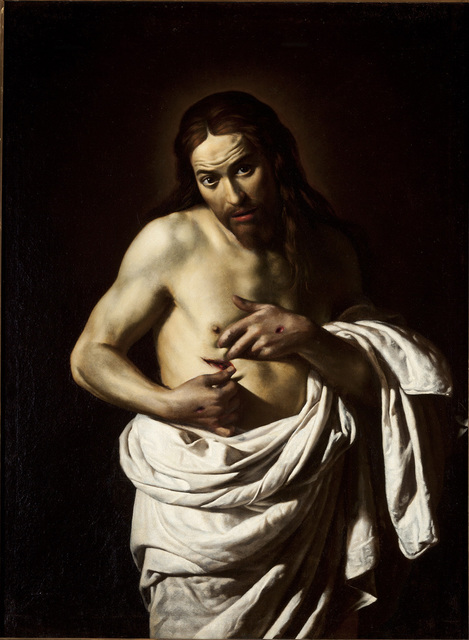
What yoga offers that other exercise regimens do not is a sophisticated use of the breath. This is called prana, and the practice of breathing is pranayama. The definition of prana is the same as pneuma; it is energy. Yoga teaches many breathing techniques (maybe about 50 of them). Common pranayamas are ujjayi breath and alternate nostril breathing. Ujjayi is called ocean breath because inhales and exhales pass through the throat as well as the nostrils with its moisture that cause a gurgling sound. This is helpful in holding holding poses or asanas because it gives us additional energy. In alternate nostril breathing fingers and thumb are placed on the nostrils and inhales and exhales pass through one nostril alternating with the other, as in the following image. Alternate breathing clears the nasal passages and clears the mind.

Another pranayama that yoga practices, and can be done by anyone, is a full inhale through the nose and a full exhale through the mouth. This is accomplished by sitting up straight (in lotus position or in a chair), pushing down with one’s hands on your knees while inhaling as fully as you can, and then bending forward and exhaling fully from the mouth. The following model is sitting with legs out straight, but more typically one sits in lotus position or on the chair. The point is to fill the lungs completely with air and then empty them as fully as possible.

The model is pushing up his torso from the floor. Seated one would push up from your knees. In the following image he bends his torso over his thighs and breathes out from his mouth (usually five breaths gets the wind out).

I would note that readers, singers, and preachers need breath control. You need enough breath to get through a complete thought without needing an inhale in the middle of it.
In my article on “Yoga Harnessing the Wind and Releasing the Spirit,” I mentioned five different ways in which air or wind (vayu) works in the body. Prana is drawn into the body. It was drawn upward to the heart and lungs. It is circulated throughout the body. It is drawn inward to the mind. It is eliminated. I pondered whether the energy of the Holy Spirit can also be drawn into the body, circulated throughout the body-mind, and released back into the world. Since my teacher had taught a meditation based on the five vayus (winds), I created a form of invocation of the Holy Spirit that can serve as a preparation for meditation or worship.
This form of invocation is based on movement and possibly chanting on a monotone. I suggest using as a mantra the Latin Veni Sancte Spiritus (“Come Holy Spirit). For those who don’t chant, the words can be spoken aloud or in the mind.
Standing, extend the arms outward from the body while inhaling. Holding that position, exhale while chanting Veni (Come). By extending the arms out and drawing the shoulders slightly back, the chest is opened up and the lungs can be filled with air.

Raise arms overhead on inhale. Holding that position, chant Sancte (Holy) while exhaling. This pose stretches the body so that it is expanded to fill the gaps with the breath/Spirit.

Bring hands to chest (heart) while inhaling. Hold hands in prayer position while chanting Spiritus (Spirit) during exhale. This pose seals the breath/Spirit. But the upward or outward pointing hands indicates that the purpose of the Spirit is to connect us with God and with others.
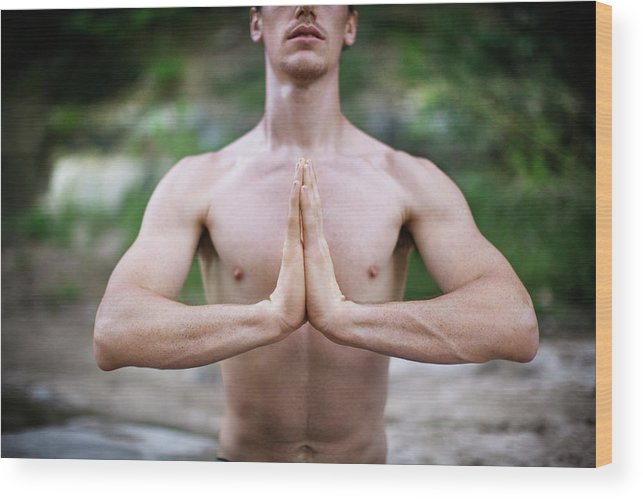
This movement and chant may be repeated several times. Its use is not limited to the Day of Pentecost. The invocation of the Holy Spirit precedes many acts of worship at all times. It could be used at the start of any time of meditation as a way of centering the body and mind.
We learn from pranayama practice is that Spirit is given but must be received. And just as prana must be inhaled, it must be exhaled. The Holy Spirit is not created by our actions, but the Spirit of God must fill our being to expel the other things in our lives that keep us from connecting with God and with others. What we show toward God and the world is the love God has shown to us and to the world God has created.
This cobra pose requires intense inhaling and exhaling prana (breath/spirit). The very act of inhaling and exhaling can serve as the content of meditation that follows the invocation of the Spirit. Since Pentecost usually occurs at the beginning of summer-like weather, the meditation might be done outdoors in a natural setting where we can also be tuned into God’s creation.
Pastor Frank



